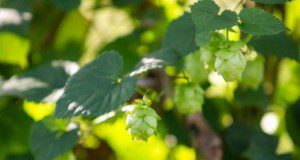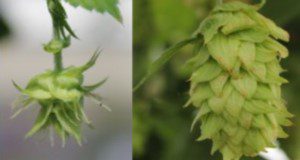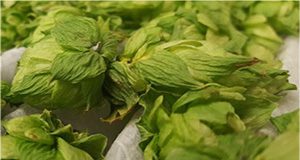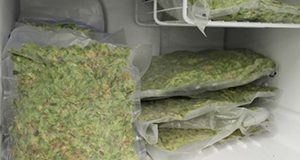El lúpulo (Humulus lupulus L.) es un ingrediente esencial en la elaboración de cerveza, que agrega amargura y sabor a la cerveza. Impulsada por el reciente movimiento de la cerveza artesanal, la producción de lúpulo se está expandiendo hacia estados no tradicionales en la producción de lúpulo. En Florida, aunque la producción comercial de lúpulo es casi inexistente, la cantidad de cervecerías artesanales aumentó de 45 en 2011 a 285 en 2018, y el impacto económico de la industria de la cerveza artesanal en Florida supera los $3 mil millones. Este nuevo artículo de 7 páginas, escrito por Shinsuke Agehara, Aleyda Acosta-Rangel, Zhanao Deng, Jack Rechcigl y Simon Bollin, traducido por Mariel Gallardo y publicado por el Horticultural Sciences Department de UF/IFAS, proporciona pautas y consideraciones para construir el sistema de tutorado para lúpulo y su establecimiento en Florida, utilizando como modelo, el campo de investigación del UF/IFAS Gulf Coast Research and Education Center (GCREC).
https://edis.ifas.ufl.edu/hs1408
Tag: Hops (Humulus lupulus)
LED light increases leaf area and root length of Humulus lupulus (var. Tettnanger) in vitro
Propagation of hops has traditionally been accomplished through vegetative techniques. A more modern technique, micropropagation, can be used to propagate hops and offers several advantages to vegetative techniques. Research examining the use of LED lights in plant production has observed its ability to promote growth in plants through emission of higher light quality, such as enhanced red and blue wavelength discharge. This new 5-page EDIS publication provides information on the use and application of LED lights to enhance leaf area and root length of hops. Written by Chi D. Nguyen, Dominic Vu, Heqiang Huo, and Brian Pearson, and published by the UF/IFAS Environmental Horticulture Department.
https://edis.ifas.ufl.edu/ep583
Harvest Techniques for Hops (Humulus lupulus)
Hops (Humulus lupulus) are perennial plants commonly harvested for their mature strobiles, also referred to as cones, which are primarily dried and used as a bittering agent and preservative in beer production. The two primary factors of harvest timing and harvest method can have large impacts on the quality and economics of the finished product. The decision of when and how to harvest is important and should rely upon growing-region-specific environmental conditions, physical observations of the cones, and the wants and needs of the individual producer. This new 4-page publication of the UF/IFAS Environmental Horticulture Department describes the primary methods used in hop harvesting, including field, indoor, and machine harvesting. Written by Sean Michael Campbell and Brian J. Pearson.
https://edis.ifas.ufl.edu/ep578
Process of Drying Post-Harvest Hops (Humulus lupulus) for Small-Scale Producers Using a Novel Drying Rig
Fresh horticultural goods often require drying post-harvest to preserve quality and allow for successful long-term storage of plant material. Given the influx of hops cultivation in the state of Florida, this 5-page publication will help Florida hops growers and hobby brewers to understand how to efficiently dry hops prior to storage. Written by Sean Campbell and Brian Pearson and published by the UF/IFAS Environmental Horticulture Department, January 2019.
http://edis.ifas.ufl.edu/ep568
Packaging and Storage of Hops (Humulus lupulus)
Hops (Humulus lupulus) are an essential ingredient to the production of beer. This 3-page document describes how to properly store and package hops. Written by Brian Pearson and Sean Campbell and published by the UF/IFAS Environmental Horticulture Department, June 2018.
http://edis.ifas.ufl.edu/ep561




